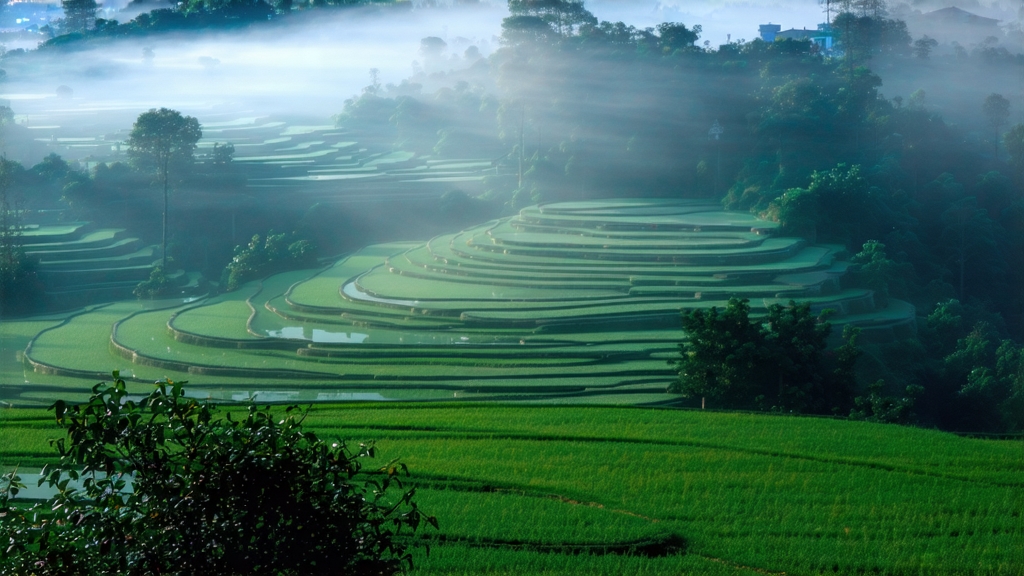
If green tea is the soul of Chinese tea culture, then Longjing—often spelled Lung Ching in older texts—is its most luminous spirit. Named after the “Dragon Well” spring that once served the monks of Lion Peak, this flat, jade-colored leaf has been celebrated for more than twelve centuries, yet every spring it is born anew, carrying in its cells the cool mists of West Lake and the smoky memory of hand-fired woks. To understand Longjing is to witness how geography, history, and human touch can be folded into a single sip.
Historical whispers
The first reliable record appears in the Tang Dynasty Lü Yu’s Classic of Tea, which lists a tea from Qiantang county—modern Hangzhou—as “ranked among the superior.” By the Song Dynasty the leaves were already pressed into cakes and sent as tribute; when the Ming court abolished compressed tea, local farmers learned to pan-fire the loose leaf, giving birth to the style we recognize today. The Qianlong Emperor’s 18th-century tour of Jiangnan sealed Longjing’s fame: legend claims he plucked leaves himself at the Hugong Temple garden beneath Lion Peak, then bestowed imperial status on the eighteen mother trees that still survive, fenced but leafy, like living relics.
Terroir: one lake, many peaks
West Lake is a shallow freshwater mirror ringed by low, forested hills of weathered sandstone and quartz. The water body moderates temperature, while morning mist refracts sunlight into soft, diffuse rays that slow photosynthesis, building amino acids at the expense of catechins—hence the tea’s famed sweetness and low astringency. Within this micro-region six peaks are traditionally singled out: Shi Feng (Lion Peak), Wengjia Shan, Meijia Wu, Longjing Village, Yunqi, and Hupao. Each slope differs in elevation, soil depth, and diurnal range, so a Shi Feng Longjing tastes almost nutty and floral, whereas a Meijia Wu leaf can be grassier with a faint bean-skin note. Purists insist that only leaves harvested inside the 168 km² core zone deserve the name West Lake Longjing; everything else is Zhejiang Longjing, still delicious but lacking the lake’s misty halo.
Cultivars: beyond the ubiquitous
The traditional cultivar is Qunti, an open-pollinated landrace with small, thick leaves that tolerate high heat during pan-firing. In the 1980s researchers released Longjing #43, a clonal selection that buds ten days earlier, yields higher, and produces a brighter green infusion; it now dominates early-spring auctions. More recently Longjing #44, Zhongcha 102, and even a rare albino mutant called Yujinxiang have entered boutique gardens, each adding subtle twists of orchid or milk aroma while still submitting to the classic flat-leaf shaping.
The hand that shapes the leaf
Longjing is the only famous Chinese green tea still defined by manual pan-firing. After picking, the leaves are withered briefly on bamboo trays to reduce surface moisture. A master—often a wiry grandmother whose forearms are mottled with old burn marks—heats a cast-iron wok to 80 °C, rubs it with a rag soaked in tea oil, then tosses in 250 g of fresh leaf. For the next twenty minutes she alternates between shaqing (killing-green) and huiguo (final shaping), pressing the leaves against the wok with bare fingers in a motion that looks like calligraphy: push, lift, shake, sweep. The temperature drops in three careful stages; any hotter and the amino acids caramelize, any cooler and the grassy volatiles remain. When finished, the leaf moisture is below 6 %, the color an even lettuce-green, and the shape perfectly flat, tapering to a sharp tip—what poets call “one flag and one spear.”
Grades and the spring ritual
Commercial grading begins with harvest date. Pre-Qingming (before 5 April) leaf commands the highest prices; the buds are barely 2.5 cm long, containing 5 % soluble sugars and almost no fiber. Yuqian (before Grain Rain, 20 April) is next, still tender but with a hint of strength. After that the leaf grows coarse, suitable only for everyday brews. Within each season the leaf is sorted by uniformity, color, and aroma into six grades: Supreme, Special, and 1 through 4. A top Shi Feng Pre-Qingming lot can